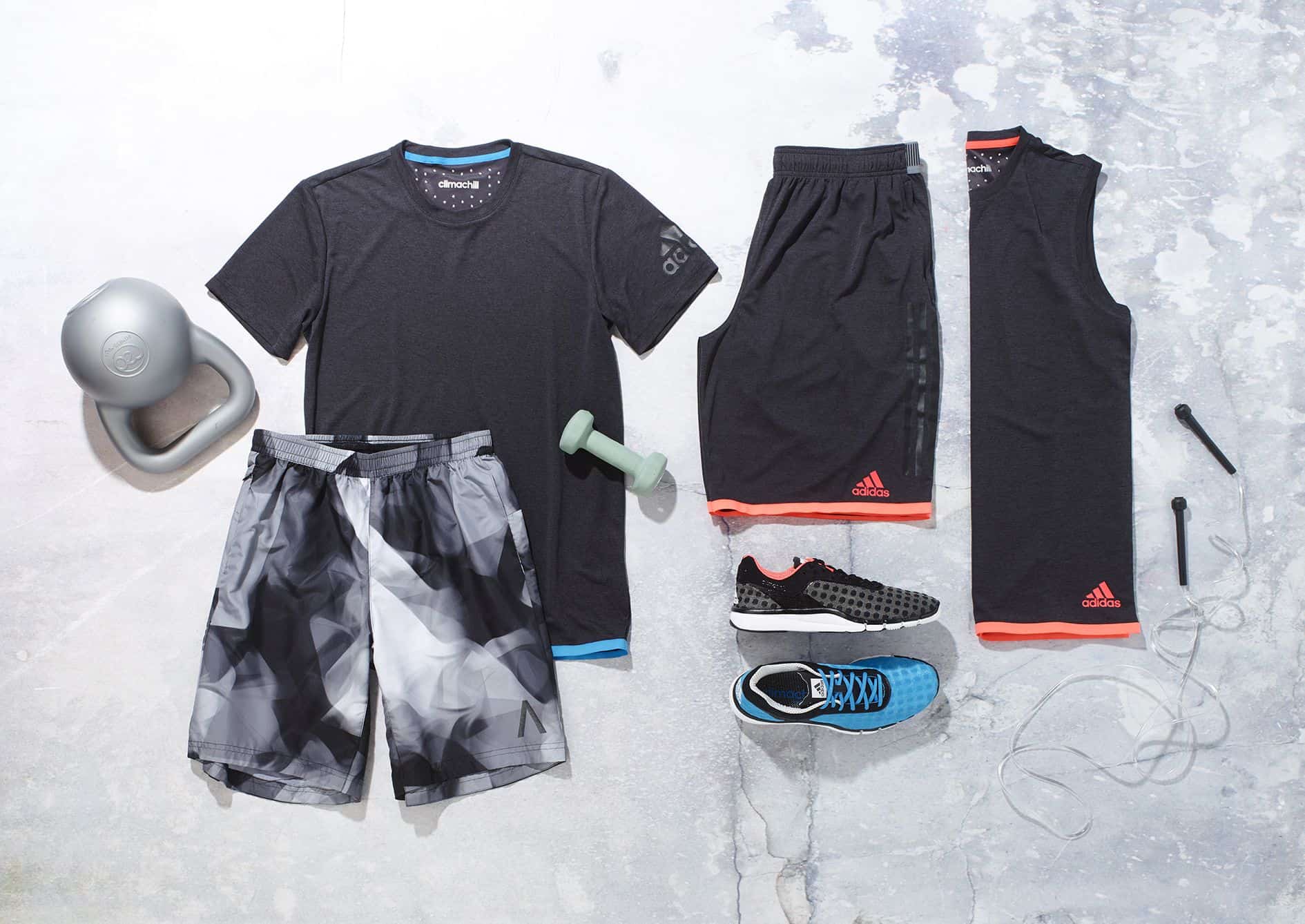Development of Breathable Active Sports Wear
Latest Articles
January 25, 2021
AThe sportswear textile industry has not only seen in market diversification for fibrous materials but has also contributed towards the elevation of textile science and technology to a level of approaching that of high tech industrial sectors. The performance requirements of many sports goods often demand widely different properties from their constituent fibres and fabrics, such as barrier to rain, snow, cold, heat and strength.
At the same time these textiles must fulfill the consumer requirements of drape, comfort, fit and ease of movement. Among the contributing factors responsible for successful marketing of functional sportswear has been made in the fibre and polymer sciences and production techniques for obtaining sophisticated fibre, yarns and fabrics.
The finishing and laminating industries have done pioneering work in the area of developing these technologies towards the needs of sportswear and sporting goods sectors resulting in unique products. This paper reviews various works done in development of waterproof, breathable and active sportswear textiles.
The moisture transport properties and various factors affecting it are also discussed for sportswear fabrics using different fibres. The various blended fibres and fabrics with different fabric structure and the functional finishes used for the development of waterproof, breathable and active sportswear textiles have been described along with their constitutional elements and special characteristics.
The active breathable fabrics are designed for use in garments that provide protection from the environmental factors like wind, rain and loss of body heat. Waterproof fabric completely prevents the penetration and absorption of liquid water. The term breathable implies that the fabric is actively ventilated. High functional fabrics support active sportswear with importance placed on high functions as well as comfort. Finally, materials with heating and/or cooling property have newly attracted the interest of the market. All these materials do not pursue a single function, but different functional properties combined on a higher level.
For a person engaged in normal routine indoor activity, energy expended is 50 watt/square meter/hour. The metabolic heat generated is readily dissipated through the clothing as sweat. At rest, a body will give off, about 60 ml of water vapour per hour at ambient conditions. Moderate exertion (Walking) will increase the amount to about 450 ml per hour. During sporting activity, e.g., tennis or cycling, the metabolic heat increases six times and perspiration 14 times (840 ml).
During such strenuous body activity, the wearer perspires and the cloth worn next to skin will get wet. The sports and leisure wears exert a barrier for efficient transfer of excess heat resulting in a rise in core body temperature and skin temperature greater than 37°C which increases sweating. The excess heat moistures the fabric, which then reduces the body heat and makes the wearer become so tired.
So the fabric worn next to skin should have two important properties. The initial and the foremost properties are to evaporate the perspiration from the skin surface and the second property is to transfer the moisture to the atmosphere and make the wearer feel comfortable. This can be achieved by bi – layer fabric concept with various fibers.
The performance requirements of many sports goods often demand widely different properties from their constituent fibres and fabrics, such as barrier to rain, snow, cold, heat and strength and at the same time these textiles must fulfill the consumer requirements of drape, comfort, fit and ease of movement.
Among the contributing factors responsible for successful marketing of functional sportswear has been made in the fibre and polymer sciences and production techniques for obtaining sophisticated fibre, yarns and fabrics. The finishing and laminating industries have done pioneering work in the area of developing these technologies towards the needs of sportswear and sporting goods sectors resulting in unique products.
Properties Required For Active Sportswear
For top level competition, active sportswear requires super lightweight, low fluid resistance, super high tenacity and stretch ability. For those seeking comfort and healthy pursuits, critical features include thermal retention, UV resistance, cooling capacity, sweat absorption and fast drying, vapour permeability, water proofing to provide relaxation without fatigue. From the sensitivity or aesthetic point of view softness, surface texture, handle, luster, color variation, transparency and comfort in sportswear are important factors. In general predominant requirements from most of the active sportswear are: protection, insulation, & stretch.
Characteristics of Active Sportswear
In active and endurance sports, the performance of sportswear is synonymous with its comfort characteristics. In active wear of outdoor use, the clothing should be capable of protecting the wearer from external elements such as wind, sun, rain and snow. At same time it should capable of maintaining the heat balance between the excess heat produced by the wearer due to increased metabolic rate on the other hand and the capacity of clothing to dissipate the body heat and perspiration on the other.
All these resulted in some of the most interesting fabrics which possess the desired qualities of good tactile properties, thermal insulation, stretch, quick liquid absorption ability to evaporate water while staying dry to the touch and being capable of transporting perspiration from skin to outer surface and then quickly dispersing it the performance category that has seen a large number of innovations is that of moisture management, which is directly related to comfort.
These fabrics are engineered by using either micro porous or hydrophilic membranes, and the water vapour transmission through these membranes is achieved by the physical process of adsorption, diffusion and adsorption.
It is now well established that no single fibre or blends of different fibres can make ideal sportswear. The pre requirements of ideal sportswear are rapid transport of perspiration away from the body and then its rapid evaporation.
Fibres Used In Sportswear
For every active sport, synthetic fibres preferred because they do not retain moisture and therefore do not get heavy upon sweating like cotton does. Synthetic sports uniforms also have better dimensional stability. Synthetic fibres offer the three major requirements in today’s high technology sports uniforms: Warmth, wind resistance, moisture wicking and lightness. Comfort and feel of natural fibers, Style and a variety of colours.
With the advanced technology, however, natural fibres like cotton and Tencel are making a comeback in high-performance, outdoor activities. For example, cotton can be made wind proof, breathable, and water resistant. For heavier fabrics, such as track suits and jogging suits, nylon, polyester, acrylic, and their blends with acetate, cotton and wool are used. These fabrics maybe brushed inside for warmth and are cut loosely for comfort.
Polypropylene fibres are increasingly being used in the sportswear market ashlars is still very small. The fibres have very low moisture absorbency but excellent in moisture vapour permeability and wicking capabilities. Insensible and liquid perspiration are transported away from the skill without being absorbed making it an ideal fibre for sportswear. As polypropylene does not become wet and its thermal insulation is retained during and after strenuous activity. However soil removal is difficult and fabrics made from polypropylene may shrink if washed at high temperature. These fibres are also relatively more difficult to dye and finish.
Tencel is a trade name and the generic name is Lyocell. Lyocell is a natural, man-made fibre produced in an environmentally-friendly process from wood pulp that has become popular in clothing because it is absorbent and comfortable for wear, especially in conditions of high humidity. Lyocell also drapes attractively and is flattering in dresses and shirts.
Lyocell is stronger than cotton or regular viscose rayon and does not lose strength when wet as viscose rayon does. Lyocell stretches more than cotton, but less than viscose. It is often blended with cotton and/or polyester, mainly in woven fabrics, rather than knits. It is absorbent and comfortable for wear in conditions of high humidity because it is cellulosic which causes moisture to be wicked away from your skin.
Cotton is a hair attached to the seed of the cotton plant or the species of a plant known as gossipium. Cotton is the oldest fiber used for textile purpose. Cotton is used extensively used in apparel fabrics for men’s wear and women’s wear and house hold fabrics like bed sheets, towels, rugs and carpets. Cotton can also be used in industrial application as tire cords, in bags, shoes and medical supplies and equipment’s.
Wool is a versatile fibre for all climates. All consumers are aware of wool as a wonderful cold weather fibre, and correctly associate wool with warmth and comfort. However not many consumers realize that, with correct engineering, wool can act as a superb cool fabric for extremes of summer heat. Many might remember the ‘Cool Wool’ promotion several years ago where wool fabrics were crafted to maximize their potential for summer suiting fabrics. To make fine, light weight summer wear from wool, it is important to choose the correct wools and the right spinning and weaving technologies. The secret of making wool fabrics to be warm is to engineer the bulk of the yarns (bulky yarns trap air that acts as an insulator and leads to warmth) and to produce hairy yarns and fabrics (hairy yarns trap air, and reduce direct contact of the skin with the fabric).
Unitika Limited has launched Hygra, which is a sheath core type filament yarn composed of fiber made from waterabsorbing polymer and nylon. The water-absorbing polymer has a special network structure that absorbs 35 times its own weight of water and offers quick releasing properties that the conventional waterabsorbing polymer cannot do. On the other hand, nylon in the core gives tensile strength and dimensional stability. Hygra also has superior antistatic properties even under low wet conditions. The main apparel applications include sportswear like athletic wear, skiwear, golf wear etc.
Lumiace is also a product from Unitika. It is a collection of polyester filaments having different fineness (0.5 – 2.0 denier per filament) and irregular cross sections. Hygra – Lumiace combination in knitted fabric is very popular in top Japanese athletes.
Dryarn is the new fibre from Aquafil. It is a completely recyclable polypropylene microfibre. Fabric from Dryarn is very lightweight and comfortable and used in different sports. In addition it has a soft handle and a high thermoregulatory capacity and also dries quickly. Bacteria cannot settle on smooth surface of the fibre which avoids unpleasant odour associated with decomposition of bacteria.
Killat N from Kanebo Ltd is a nylon hollow filament. The hollow portionis about 33 per cent of the cross section of each filament due to which it gives good water absorbency and warmth retentive property. The manufacturing technology of Killat N is very interesting. The yarn is spun as bicomponent filament yarn with soluble polyester copolymer as the core portion and nylon as the skin portion. Then by giving alkali weight loss treatment the soluble polyester copolymer of the bicomponent filament will dissolve and a large hollow portion (exceeding 30 per cent of the cross section) will be created.
Toyoba Co Ltd has developed Triactor, which is a perspiration absorbing/quick drying polyester filament. Polyester is hydrophobic and does not absorb moisture but by changing the filaments to Y shaped cross section Toyobo has realised quick perspiration absorbency by capillary action. The hydrophobic nature and large filament surface of polyester filaments realise quick drying and refreshing properties at the same time. There are many other fibres, which have good sweat absorption and fast drying property. Most of them are either nylon or polyester.
Roica is a polyether type spandex made by dry spinning method and Leofeel is a soft nylon-66 yarn developed by Asahi Chemical. The combination of Roica and Leofeel in mixed knitted tricot fabric gives a soft touch and excellent stretch. It is mainly used in swimwear. Various other fibres like Elite from Nylstar Co, Linel Ac from Fillattice Co, Elastil and Sens from Miroglio etc also have good stretchability and are effectively used in swimwear
Polyester micro-fibers are characterized by their low denier and a fiber is considered as a micro-fiber when its denier is below 1 (0.8). It is generally agreed that a micro fiber yarns indicates the filament and staple of fiber, which are 1.0 denier and less. (Denier is the fiber weight in grams of a 9,000 meter length). The higher the number, the thicker the fiber.
One of the most important developments in recent years has been the technology to extrude extremely fine filaments (less than 1.0 denier) to produce fabric with a softer feel. These microfibers are much finer than natural fibers. This coupled with extraordinary performance have given them another worldly reference – “Supernatural” is what much of the industry calls these microfibers.
The chief special feature of microfibers is its cotton-like soft feel. Among the other features that this finest man-made fiber offers are wrinkle resistance, lightweight, drape ability, softness, silkiness and buttery hand. Yet, the spaces between the yarns are porous enough to breathe and wick moisture away from the body. Micro-fibers are most commonly found in polyester and nylon. Some rayon and acrylic micro-fibers are in production and available to consumers. Micro-fibers can be used alone or blended with conventional denier man-made fibers as well as with natural fibers such as cotton, wool, and silk.






